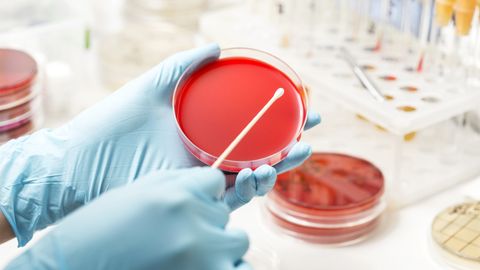In Vivo vs In Vitro: Definition, Pros and Cons
In this article, we will define the terms in vivo and in vitro and further evaluate the pros and cons of analysis using these methods with detailed examples.

Complete the form below to unlock access to ALL audio articles.
Contents
In vivo vs in vitro definitions
If you have read any scientific study that involves biological or medical research, then you may have encountered the terms “in vivo” and “in vitro” throughout the text. The etymological origins of in vivo and in vitro come from Latin; in vivo describes something “within a living organism” while in vitro describes something “in glass” such as a test tube or petri dish. In this article, we will define these terms and further evaluate the pros and cons of analysis using in vivo and in vitro methods with detailed examples.
In vivo vs in vitro definitions
In vitro and in vivo models in drug development
Before an experimental drug is studied in vivo, its mechanism of action and complexity need to be thoroughly evaluated using in vitro models. In vitro models provide a starting point for researchers to gather insights into how a cell responds to a new drug in a controlled, isolated environment.
For example, in vitro tumor models provide low-cost platforms for a pharmaceutical company to study the biological effects of experimental drug candidates against cancer cell lines. Results from these studies can inform researchers about the molecular mechanisms of each drug candidate and how these mechanisms may influence cancerous cells under defined conditions. However, these results are extremely difficult to extrapolate a clinical effect2 from as they studies were not performed in an intact, living organism, where far more biological variables are in play.
Once a drug candidate demonstrates effectiveness through a series of in vitro experiments, in vivo models can be employed to advance drug development studies. These preclinical studies typically involve the use of animals to further evaluate the safety, efficacy and delivery of a drug candidate. For example, rodent models inoculated with tumor cells3 are commonly used to screen anti-tumor drug candidates that exhibited promising results throughout previously performed in vitro studies.
| Type of Study | In vivo | In vitro |
| Definition | Studies “within a living organism” | Studies performed “in the glass” |
| Cost | Very expensive | Relatively low cost |
| Time | Long and extensive | Relatively fast |
| Example | Clinical trials and animal studies | Organ-on-a-chip, microphysiological systems, cell-based screening, diagnostic tests |
| Pros | More specific and reliable for observing biological effects in a test subject | Relative simplicity, species specificity, experimental control |
| Cons | Strict regulations and compliance standards | Physiologically limited |
What is in vitro testing?
Organ-on-a-chip
An organ-on-a-chip is a three-dimensional, microfluidic device that combines cell culture with biomedical engineering to simulate the physiological environment of an entire organ in vitro. Today, organ-on-a-chip technologies have emerged as a promising platform for advanced drug development studies focused on studying the adsorption, distribution, metabolism and excretion properties of drug candidates. Such technologies are currently being applied to better understand the molecular mechanisms of liver, kidney, heart, lung and brain diseases.Microphysiological system
Microphysiological systems are interconnected constructs that recapitulate the function(s) of an organ in vitro. These systems combine tissue engineering, microfabrication and biosensors to enable the organization and function of multiple tissue-specific cells over time. For example, a kidney-on-a-chip system4 combines functional glomerular and nephron-derived constructs to mimic a working kidney would qualify as a microphysiological system. These systems also contribute to the technological trends behind advances in drug discovery at the preclinical stage.What is in vivo testing?
Humans and animals share a lot of anatomical and physiological features with comparable functions. Consequently, animal testing and clinical trials make up the bedrock of in vivo studies involving drug discovery.
Animal models (preclinical)
Before a drug candidate is tested in human subjects, it must undergo rigorous animal testing to further evaluate its toxicity, metabolism and overall efficacy. Vertebrate animal models such as rodents, primates, dogs and rabbits are commonly used for preclinical in vivo studies. Mice are the most used vertebrate species due to a combination of factors such as size, ease of handling, fast reproduction and low cost. Mice also share 95% of their genes with humans,5 which makes them very attractive models for studying human diseases. These factors contribute to their usefulness when it comes to evaluating the safety and efficacy of drug candidates at the preclinical stage.
Human trials (clinical)
Once a drug candidate has demonstrated sufficient efficacy and safety during animal studies, human studies may commence. Researchers at this stage are interested in assessing whether a treatment is safe and effective for its intended population of subjects. Humans who partake in a clinical trial will be closely monitored to evaluate the drug metabolism and pharmacokinetic qualities of the experimental therapy over time. These trials need to perform such analyses with continued monitoring afterward so that drug candidates can be thoroughly evaluated to be safe and effective.
References:
1. Lorian V. Differences between in vitro and in vivo studies. Antimicrob Agents Chemother. 1988;32(10):1600-1601. doi: 10.1128/AAC.32.10.1600
2. Gillette JR. Problems in correlating In vitro and In vivo studies of drug metabolism. In: Benet L.Z., Levy G., Ferraiolo B.L. (eds) Pharmacokinetics. Springer, Boston, MA. 1984. doi: 10.1007/978-1-4613-2799-8_19
3. Miwa T, Kanda M, Umeda S, et al. Establishment of peritoneal and hepatic metastasis mouse xenograft models using gastric cancer cell lines. In Vivo. 2019;33(6):1785-1792. doi: 10.21873/invivo.11669
4. Lee J, Kim S. Kidney-on-a-Chip: A new technology for predicting drug efficacy, interactions, and drug-induced nephrotoxicity. Curr Drug Metab. 2018;19(7):577-583. doi: 10.2174/1389200219666180309101844
5. Pennacchio LA. Insights from human/mouse genome comparisons. Mamm Genome. 2003;14(7):429-436. doi: 10.1007/s00335-002-4001-1



